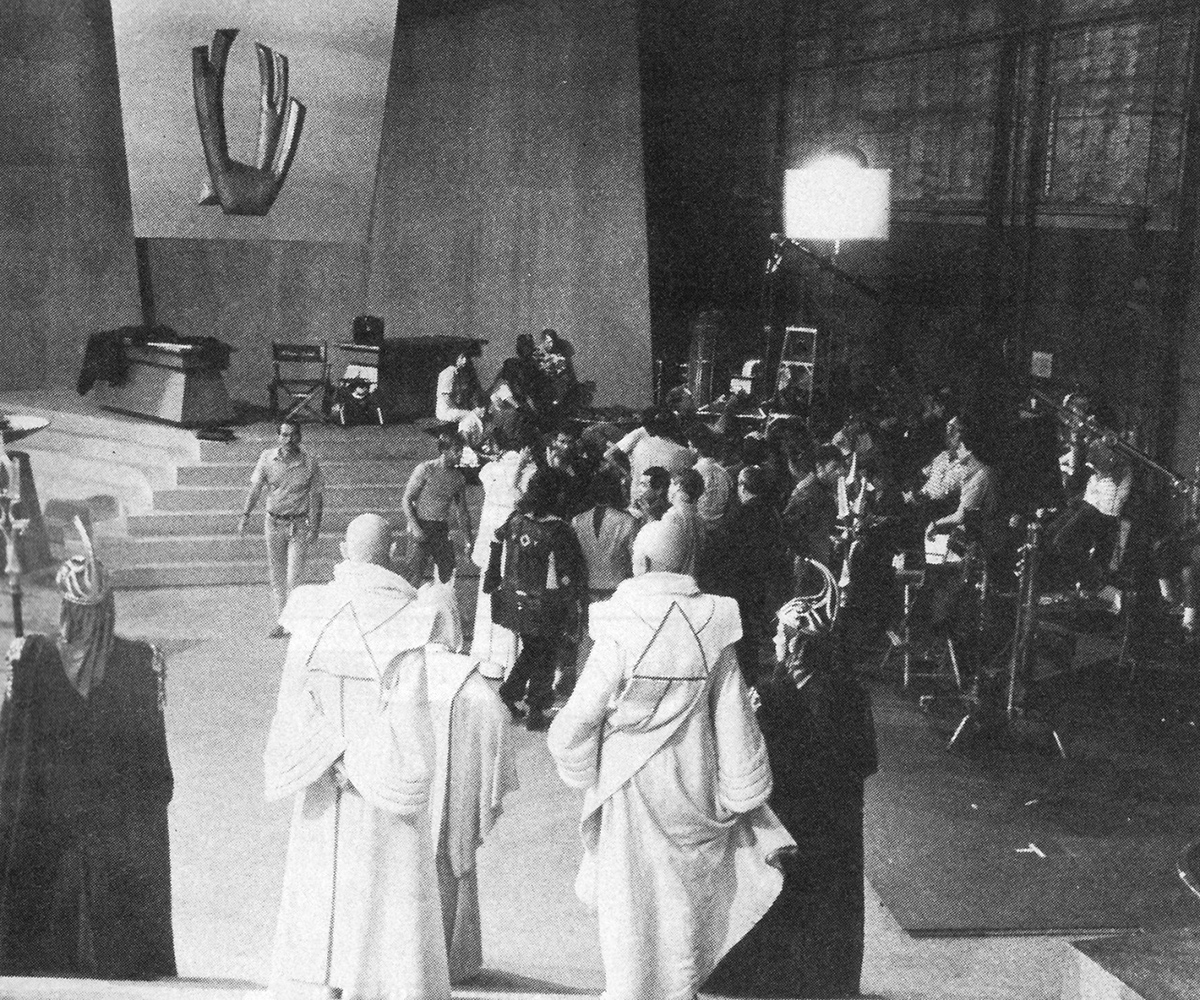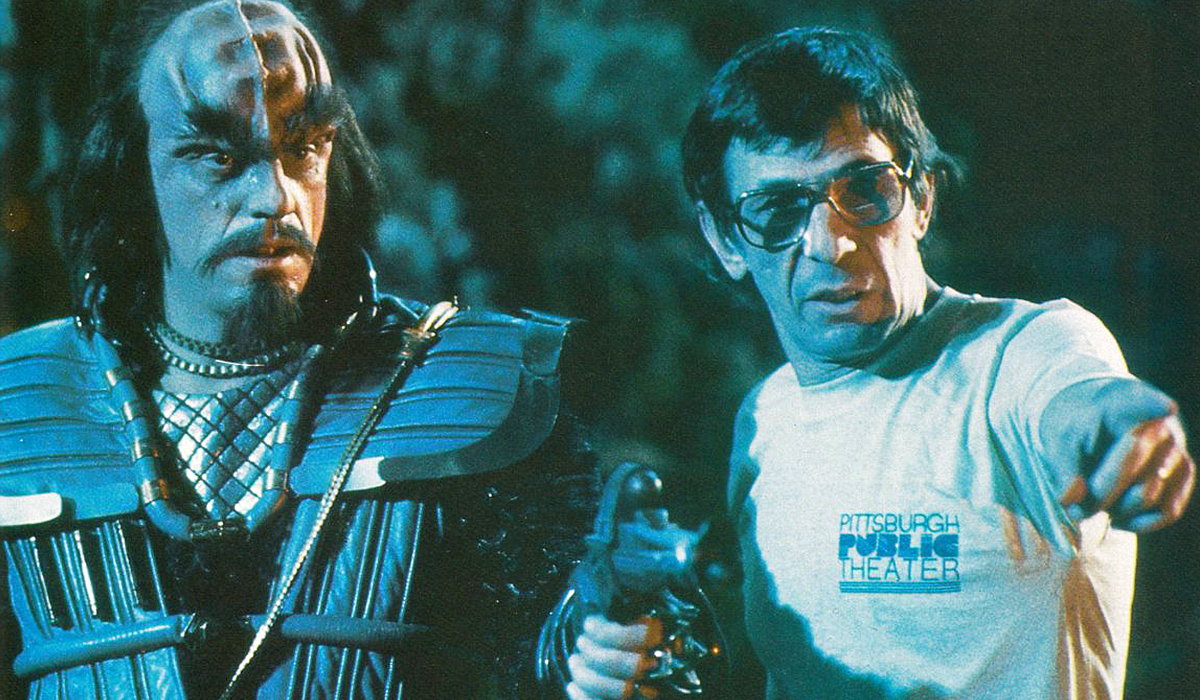Leonard Nimoy Directs The Search for Spock

In 1984, Leonard Nimoy had directed a few television episodes, but never a motion picture. Yet the actor who gained fame playing Spock on Star Trek and its first two feature films was — if you’ll pardon the pun — a logical choice for directing The Search for Spock.
Ralph Winter, an associate producer of the third Star Trek film, told Enterprise Incidents in 1985 (My Star Trek Scrapbook has the full interview) that Nimoy was primarily selected because of his familiarity with the material.
Moreover, “I think it was bound to spark interest at the box office,” he said, “getting one of the cast of the family of Star Trek to be involved creatively in putting the show together.”
I think it turned out very nicely and Leonard knows about Vulcans and mysticism and everything that is involved with that little culture on film. Leonard knew about that and wanted to bring to life a lot of things that had been glossed over or never really developed before.
Not a one-take director

Charles Correll, director of photography, remembered Nimoy as a “casual director” in an interview with Cinefantastique that was published in June 1987.
He trusted me and he was very explicit about what he wanted. He let the cast do what they were used to.
Nimoy’s style wasn’t to drill the actors, but rather to shoot the same scene several times and pick the version he liked best.
He is not a one-take director. He had a tendency to do it a few times, maybe six, and print them. He does the same scene the same way and chooses the best.
Ending on Vulcan
Nimoy recalled in an interview with Starlog (My Star Trek Scrapbook has the whole thing) that there was some trepidation on the part of the executives. They weren’t sure about the story ending on Vulcan.

“I felt very, very strongly about that final sequence,” said Nimoy. “I wanted to end the film by bringing Spock to Vulcan and going through the ritual.”
Not being so familiar with Star Trek, the executives didn’t understand what that sequence would mean to the audience. They were worried about it and tried to convince me to substitute a different ending. They wanted to end with the dramatic escape from the Genesis Planet, getting Kirk and Spock on board the Klingon Bird of Prey, reviving Spock in the sickbay, doing a little tag scene and going home.
Nimoy argued — “vehemently” — against the notion and got his way. “I didn’t discuss the film with them again until I showed them my first cut.”
Classic tragedy
Reception to Nimoy’s directing abilities was largely positive, although some fans were appalled by the death of Kirk’s son and — perhaps more so — the destruction of the Enterprise.
Nimoy defended both decisions in the same Starlog interview.
He explained that the death of David Marcus had its roots in classic tragedy. It is the vengeance of fate wreaked upon the flawed character who created the problem. David had to pay the price for the pain and suffering he inflicted — internationally or not — by putting the Genesis device into operation prematurely.






The demise of the Enterprise was equally justifiable, according to Nimoy. “We didn’t destroy the Enterprise for cheap or inflammatory reasons, but because therein lay drama.”
As Nicholas Meyer said about killing Spock in Star Trek II, “We’re not playing games here. This isn’t a red herring, like they do on TV. Spock is really dead.” Destroying the Enterprise was the same.
Perhaps more than Nimoy could have imagined at that point. Just like Spock returned from the dead, so would the Enterprise, at the end of the next movie.
